The average new patron is a patron for 3.5 years. Don’t scare them away with a flyer that has a tank on it.
Few people are as well situated as Rev. John (born John Giovanazzi) to comment on the North American industrial scene. As one of the DJs and co-promoters of LA’s notorious Das Bunker with Franck H-Bomb, he has a unique position from which to overlook our end of the pool, both in his home of Los Angeles and across the whole of the continent. ID:UD asked John some questions about DJing, running what is arguably the largest industrial club night this side of the Atlantic and what promoters shouldn’t be doing.
ID:UD: Das Bunker has been going for 12 years plus now. What were its origins and how has it changed in that time?
Rev. John: Das Bunker started in a former lesbian dive bar in Long Beach, California in October 1996. At this time, the Los Angeles club scene was centered well inside the borders of Hollywood, and the idea of anyone going to any type of dark alternative club outside of the area was not even considered an option to 99% of the area. Hollywood at the time had just started transitioning from the era of the gutter punk street junkies and into what it is today, and in a pretty obvious way the club scene matched this perfectly. The LA clubs had lots of thriving events, but at the same time, they all had a very similar flavor to them. You knew you would hear a ton of WaxTrax and Cleopatra bands, as well as a very healthy dose of Nitzer Ebb, Skinny Puppy, etc. Not exactly cutting edge. Das Bunker was reaction to all of this. It wasn’t big, it wasn’t glamorous, and it was about as far away from Hollywood as you could get. And most importantly, the musical format was polar opposite – European cold EBM and electro (in a 1996 sense of the word). From there we have changed venues twice (each one getting bigger and adding a room) and have changed formats a few times.
Shortly after opening our club changed its focus to a very heavy mix of Powernoise (which in 1997 was just emerging), and constantly keep our ear to the street for the next big thing. Here’s a link to a playlist from the first night of Das Bunker.
It’s really a game of how far can you push the envelope without ripping it.
ID:UD: How much of DB is a reflection of your taste as a DJ and promoter? Do you feel you’ve been able to curate a particular vision of an industrial club night?
Rev. John: I’ve always said that it is the club and DJ’s responsibility to dictate the playlists, and this is because we are where the patrons look for new music. The types of music we play are not on radio, not on TV, hardly gets mentioned by any print media – and even the online presence is spotty at best. Record labels want you to play the stuff they release (obviously) and some of them are a lot more pushy about it than others. Not everything released under the “industrial” banner is club music, but with a lack of other viable means to promote the music clubs and DJ’s are often looked to promote something that they really shouldn’t. And on the other side of the coin, it’s the DJ’s responsibility to seek out that next hit track from even the most unlikely sources, and then not be afraid to play them until they catch on. “I Give You Bass” by Fuckkk Off isn’t a “scene” track by any means, but is there a huge difference between it and the Modulate remix of “Dirtygrrls/Dirty Bois”? No, not at all. The industrial kids like to pretend that the music we enjoy is so different from everything else out there, but in reality the producers in the scene get their influences from the same places a lot of other dance music producers do, and finding the points where the two intersect is the key. And at the same time, the DJs don’t like everything we play – there is a lot of stuff that our patrons rightfully expect us to play and we would be very derelict in our duties if we didn’t. It’s really a game of how far can you push the envelope without ripping it.
ID:UD: LA has a unique population in terms of demographics and density. How does that influence Das Bunker?
Rev. John: Los Angeles really is its own island as far as what people here are into – and that goes way past music. Cars, clothing, politics – I really don’t think there is anywhere else like it and that is both a blessing and a curse for promoters. From a logistical perspective, you have to be aware that your crowd is most likely driving in from quite a distance to attend your event, and make arrangements for this. There also isn’t any one type of group you can promote to – again a blessing and a curse. We don’t have the luxury of marketing from the perspective of “we are a hip hop club and most of our patrons like to buy bottles and look like ballers” or “this is a crowd who wants tall cans of PBR and won’t ever pay a cover charge”. You have to market yourself to appeal to as wide of a demographic as possible (within the acceptable target audiences, of course. I don’t think anyone wants what we call the “Affliction Doucher” crowd”) but at the same time make a very conscious effort to stick to your vision for the club. The LA market gives you a lot of opportunity for success, but also sets you up for the epic fail.
ID:UD: What underground and up and coming bands in the LA scene do you like and should people from elsewhere know about?
Rev. John: We have a good mix of bands from a bunch of different styles doing cool stuff out this way. From “they started out as powernoisy and now I’m not sure what to call them” are Fractured Transmission and Embodi (the latter did a one off minimal synth show that was amazing) who both are pretty well known around here but not sure about anywhere else. HexRx has a couple of releases but as far as I can tell doesn’t get the attention they should. Gentleman Junkie and Electrovot (San Diego) both do really cool hard edged synthpop style stuff, and Tearist, Ssleeper Hold, Stallengrad and The Present Moment [read ID:UD’s interview with TPM here – ed.] are all doing really great stuff in the analog synth revival style that seems to be blowing up here and in NYC. Oh, and old school techno meets modern dance duo Whiteqube!
There is plenty of great, current, dancefloor friendly stuff coming out all the time, and relying on off genre hits from 20+ years ago is unacceptable.
ID:UD: You’ve travelled extensively as a DJ to festivals and shows in other places. Do you bring back elements of other scenes to DB?
Rev. John: In all honestly, not a whole lot. There are a few promoters and DJs around that I think really get it. They do interesting things, have cool marketing angles, and over all understand how to keep a party fun and exciting without having to pander to the lowest common denominator. But the sad fact is that most places I come back with a reinforced idea what not to. Terrible promotions, badly designed flyers that do not give people the information they need easily. And the worst, boring music that has no business being played at a industrial club. I’m sure in some tiny town you need to cater to a million different genres to bring out enough of a crowd to keep open, but if you are in a major city and need to have stuff like MSI, Rob Zombie, Danzig, etc. in the rotation then you are just not doing a good enough job. There is plenty of great, current, dancefloor friendly stuff coming out all the time, and relying on off genre hits from 20+ years ago is unacceptable. Same goes for places that have “Headhunter”, “Join in the Chant”, and ancient Ministry still in the rotation. Before I had ever set foot I read one of Chase [head of Re-Constriction Records -ed.]‘s old club advice columns in Industrial Nation in like 1995 about this exact thing, and the fact its 16 years later and I still hear “Hey Poor We Don’t Need to Be Poor Anymore” coming out of the speakers in anything but a retro night speaks volumes about why most scene promoters and DJs are not good more than anything else.
ID:UD: Part of the success of DB seems to be rooted in close relationships with a large number of bands. How do the relationships get built and developed, and how do you maintain them?
Rev. John: This has been one of the biggest keys to our long term success. In a nutshell, we generally jump on board and support new bands and styles as they emerge, and they remember that. When VNV Nation’s first CD came out he always saw their name popping up on the playlists of one of our founders, DJ Wart. When another LA promoter blew off, in their words, this “little noise band” we were super excited about having them play for us because their debut album was in every one of our cars for a year straight. That little noise band was Combichrist. When my partner Franck made friends with this dude that would hang out near the pool table and listen to the harsh EBM tracks that no other places were playing, we had no idea that he would one day come back and play on our stage as Aslan Faction and Tactical Sekt. Before these bands became the big stars they are now, they were music fans that had a huge passion for the same stuff we enjoyed and spent so much time making a place for.
ID:UD: Can you talk about your approach to DJing vis a vis track selection, build and technical considerations?
Rev. John: My goal is to provide a well flowing set, to do different things with each set, and to present new tracks in the best possible situation for them to succeed while at the same time playing enough stuff people are familiar with to keep them happy. I’ve never been the type to plan my set ahead of time because I think it’s really important to read the crowd’s energy at the time and to play off of what the DJ before you has done. I may want to drop the new Suicide Commando single really bad, but if the DJ before me played a set of harsh EBM stuff right before I am probably going to wait a bit and try and come back to that later. I’m not a big fan of playing “hits” just for the sake of playing them – what I like to do is drop a few newer tracks I really want to push on the crowd, and as long as the dance floor stays busy then I am going to keep pushing with the new stuff. If you play 2-3 new tracks in a row and they all rock, then I like to reward the floor with a big hit that will take thing to eleven as Spinal Tap would say. If you play a new track and the response is iffy, then I will come in with the hit sooner. If the new track absolutely bombs, I will spend some time bringing them back with some more minor hits before dropping another fresh track or two and then finally a massive hit again. It’s a bit of a departure of what most other DJs do, but I have never felt that the crowd not instantly being into a song they have never heard is the end of the world, and thus doesn’t require a extreme response. Freaking out and playing ‘Chrome” just says you never had faith in the new track to begin with and that’s not a message I ever want to send.
ID:UD: With a three room party regularly DB has a large stable of regular DJs as well as numerous guest spots in the rotation. How do you select who you want to work with, and how do they contribute to the overall vibe of the nights?
Rev. John: We just added a new resident DJ for the first time in years last week, and to say we do a lot of research before making the decision is an understatement. On top of that, people don’t tend to want to leave once they have a gig with us, so that’s a bonus in our favor. Of the 7 of us, I am actually the 3rd least tenured member of the group having gotten started in 1999. Each of us has a room that’s our “specialty” and each play a slightly different style. Keeping it this way allows each DJ to build a following, explore different directions, and earn the trust of the crowd. Having patrons that look forward to seeing what new things a DJ is going to do and understand everyone’s style makes it way easier to install our format without clearing the dancefloor every couple of minutes. We also have a couple unofficial residents that really understand our format and what we try and do, and we have them play whenever they find themselves in LA. For guests, we don’t really go out of our way to find them, but when we do come across someone that really gets what we want to do we make sure to have them play. And it of course doesn’t hurt that a lot of the members of the bands we like also know how to throw it down on the decks.
The most important thing about working in a niche scene is to make sure you have a complete understanding of the scene, both on global and local levels.
ID:UD: As a DJ, promoter and businessman how do you approach working in a niche scene? What are the limitations and benefits of working specifically in industrial music?
Rev. John: The most important thing about working in a niche scene per se is to make sure you have a complete understanding of the scene, both on global and local levels. Picking up on minor trends and knowing your crowd are huge. Are kids more into the electro house flavored stuff at the moment? Then you have to make sure to play that stuff. Are the group that makes the YouTube dance videos in the house? Then you have to make sure to play the 140 BPM “Industrial techno”. Are the girls that love Tron here? Maybe slip in some harder Daft Punk track into a set. 90% of your people will not come up and request things – and they shouldn’t have to. If someone wants to have a drink and listen to a song, a place with a jukebox is perfect. A DJ and promoter should know their crowd, and doing so helps you not get stale. Having a captive audience helps a lot too. You like Aesthetic Perfection, Aesthetic Perfection is playing at our club, you are probably going to come to our club. You just have to make sure they have a good time and come back when you have a resident DJ night.
ID:UD: What are the most important factors in running a club or event to insure longevity?
Rev. John: Anyone who wants to be a promoter really should take some marketing classes. Understanding the basics of advertising really is huge. I used to work for a beer distributor and I had to sit in on marketing meetings at 6am where we were told all the tricks and tips that the hundreds of millions of dollars the Miller Beer Company spent researching in order to help us sell more product. I hated it then, but it is now invaluable knowledge. Another thing that has helped us a ton is making sure our advertisements DO NOT look like typical industrial scene stuff. For years our flyers had tanks and gas masks on them, and after a while, we had maxed out the number of attendees that would come to a club with tanks on the flyer. There is a huge market of young kids who like electronic dance stuff, and getting them to check out your night of hard electronic dance music is crucial expanding your fan base. The average new patron is a patron for 3.5 years. Don’t scare them away with a flyer that has a tank on it.
Das Bunker occurs every Friday at The Catch One 4067 W. Pico Blvd. Los Angeles, CA 90019. Their upcoming 15th anniversary party on October 14th is scheduled to have performances by Funker Vogt and ID:UD favorite Continues.

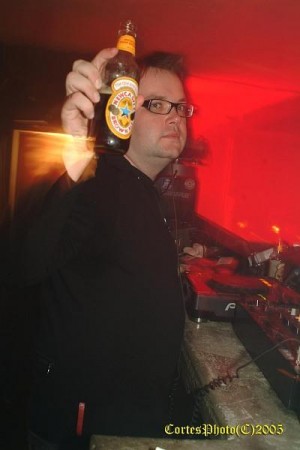



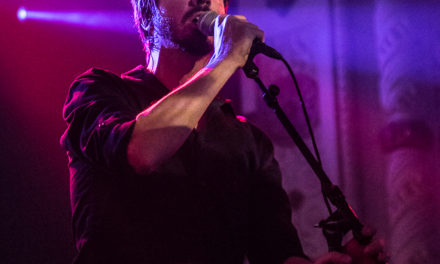
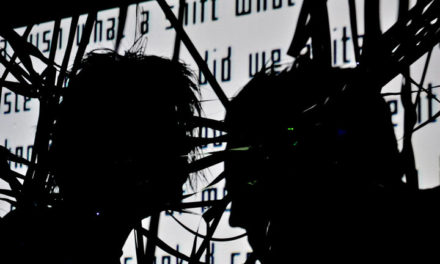
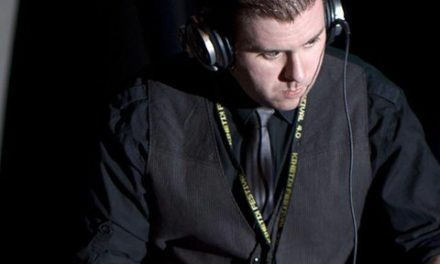
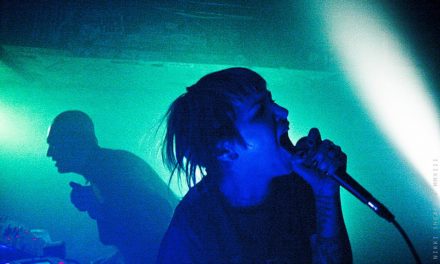
Had a lot of fun with this guys, thank again!
Our pleasure John!
Another thing that makes a great promoter, which John humbly failed to mention, is simple being a good person! Rev. John is extremely pleasant and personable, characteristics not always present in promoters in LA. I remember the first time I went to Bunker I couldn’t believe there were no scenesters following him around, no VIP section for exclusive friends or any of that silliness… just a guy who loved his club and loved what he did and that made a lasting impression on me. I don’t think I’m exaggerating when I say that a significant reason for Bunker’s success is John’s (and Franck’s) attitude and enthusiasm for the club, the guests and the music.
I totally agree with Steve. Most of the goth-club-runners I know in San Diego don’t operate with such enthusiasm, and instead thrive on self-delusion that THEY are the hip, cool thing in that club. But I’ve known Franck since he would spin in ProduQt (Das Bunker/CODE) and he’s always been personable and the life of the party in Das Bunker. My only gripe is how “the noise room” (essentially the beginning and ending of all new and different tracks that I’m sure 50% of Bunker patrons don’t listen to in their car but somehow thrills people in the club environment) is basically being held in a glorified closet of a room now with big, annoying poles you have to dance between. That Noise created tha fucking place!!! Give it back to the downstairs primary area! I’ve heard fucking Prodigy tunes since the 90’s! …gripe gripe gripe…
Nate – the noise room is of comparable size to “second” rooms at other clubs in our market. It’s bigger than the goth room at Perversion and the 2nd area that they use for music at the Monte Cristo for special events. it also has a larger dancefloor space than the DB’s first location had for the whole place, or the back room at Produqt.
Noise is also not the thriving genre it was back then, and even though there are multiple formats that we could fill that room with and be more successful – we keep noise in there specifically because of the part it has played in our history. Das Bunker was the first club in North AMerica to feature powernoise and we are now among the last that still do. Please try remember PNs heyday while also respecting that the club has to move forward.
Cool interview. A lot of that “Das Bunker” style industrial gets kinda old after a while, unfortunately. Sorta all sounds the same. But it’s REALLY awesome Rev. John gave a great shout out to Tearist, Ssleeperhold, The Present Moment, and Stallengrad. Those acts are the future. Other bands that are terrific and everybody should be watching out for are Violet Tremors, Frank Alpine, Soft Metals, Primary Colors, //TENSE//, Total Accomplishment, and Nové Můra.
This was actually a kinda neat interview.
Excellent interview, crammed full of good advice. Bunker crew have always treated me and the other artists I know beyond well. Playing as Endif or as part of other bands at Das Bunker, and the Los Angeles Industrial Festival, are still high points in my memory. And getting to take over Shane’s last set of the night in the noise room recently, while a total surprise, was really a treat, as most of the patrons of my little club night in Reno don’t quite know what to do with powernoise. Viva Bunker!